In May 2023 Postcard History presented our readers with two sets of Tuck postcards drawn by Sydney Carter. Carter’s work for Tuck was quite limited; he did only two six-card sets. His earliest set, the Brown Paper Series appeared in the 1904 catalog. The set sold well but was never offered for sale outside the United Kingdom.
Carter’s second set appeared in Tuck’s 1906 catalog with the title Homes of Literary Men. It was one of Tuck’s most popular sets, it contained Carter’s colored pencil drawings of the home and estates of six famous authors: Tennyson, Litton, Dickens, Kingsley, Johnson, and Thackeray.
Sydney Carter was born on April 2, 1874. He spent his early years “in” school and his later years “at” school. He held full-time teaching positions in England and South Africa. He married Elizabeth Crosse on December 23, 1922, in Devonshire.
Sydney and Elizabeth relocated to South Africa in 1923 and in a very determined fashion they explored the entire nation. By the summer of 1925 he found himself in the Orange Free State where he settled in for a year and worked diligently for the Society of Arts and Crafts. The Carters moved to Johannesburg in 1926.
When the 1927 school year opened, Carter won an appointment to the staff at the Witwatersrand Technical Arts College. Carter was for more than a decade among the most popular professors on the campus. His teaching methods in oil and gouache were legendary. Unlike many other successful artists of his era, he remained devoted to portraiture, natural topics, and townscapes.
He died at age 71 on December 21, and was buried in Johannesburg, South Africa, in 1945.
***
As mentioned, because of full-time work schedules and distance, Carter did very little work for Tuck. Nevertheless, when it came to printing his postcard “sketches” of Shakespeare’s plays he was successful in finding another publisher. It was S. Hildesheimer & Co., Ltd. of London & Manchester, England.
If you have ever seen a Christmas card with a Beatrix Potter rabbit drawing, it is almost certain that you have seen Hildesheimer’s work.
Siegmund Hildesheimer (1832–1896) was born in Halberstadt, Germany and in the late-1850s immigrated to Britain and found work as a publisher who was best known for greeting cards, Christmas cards, and postcards. He moved to Manchester, England in the mid-1870s.
Carter’s Sketches
The Merry Wives of Windsor
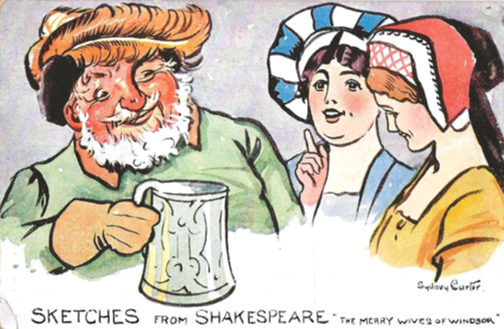
Shakespeare’s The Merry Wives of Windsor is a comedy that tells the story of Sir John Falstaff in love. He is a fat knight but a lovable rogue who first appeared in the Henry IV plays. It is perhaps a play written at the request of Queen Elizabeth and was first presented around 1602. Falstaff becomes obsessed with two married women, Mistresses Ford and Page, who live in the small Berkshire town of Windsor. The play is a masterpiece of wit and satire, and adequately showcases Shakespeare’s mastery of language.
The play’s central plot revolves around Falstaff’s attempts to seduce the two wives, but his plans are consistently thwarted by their cleverness and cunning. The wives, instead of being intimidated by Falstaff’s advances, use their wits to outsmart him and ultimately humiliate him. The play’s comedic moments are numerous and laugh-out-loud funny, with Falstaff’s many misadventures and mishaps providing much of the humor.
As You Like It
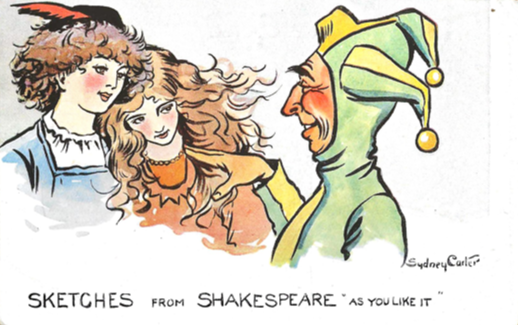
The Bard’s As You Like It is a romantic comedy that explores the themes of love, identity, and social status. It takes place in the Forest of Arden, where the exiled Duke Senior and his daughter Rosalind, who is being persecuted by her uncle Duke Frederick, find refuge.
Rosalind, disguised as a man named Ganymede, falls in love with Orlando, a young man who is also in love with her. Meanwhile, the witty and charming Viola, who is also disguised as a man, falls in love with Orsino, who is pining for the unattainable Countess Olivia. The play’s explorations are both humorous and poignant, as the characters navigate their way through webs of intrigue to complete their romantic desires and to find their proper identities.
As You Like It concludes with all details resolved and the cast finds happiness in their forested retreat.
Macbeth
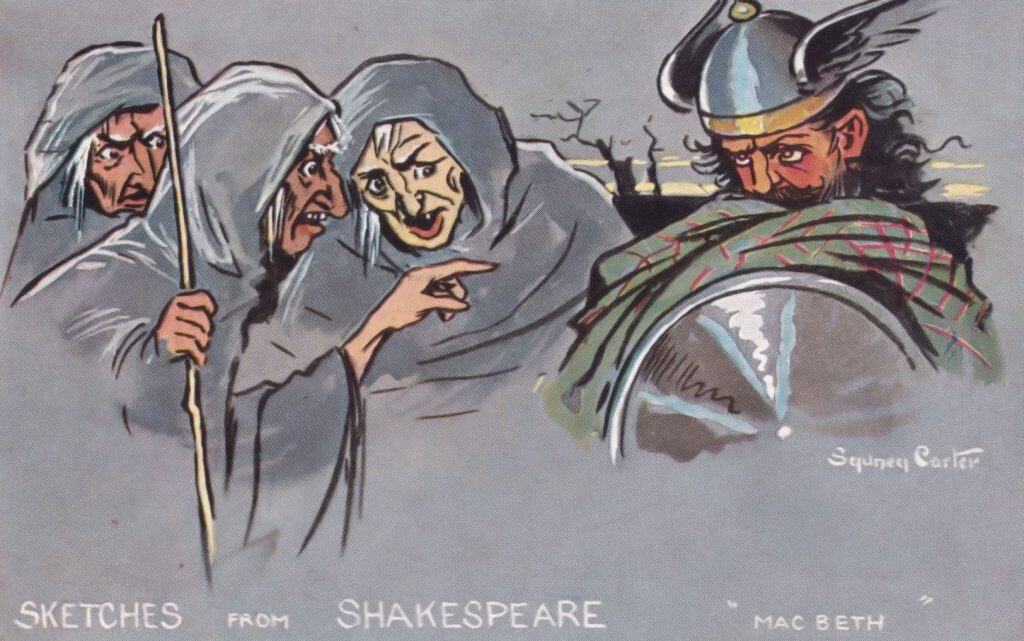
What else can be written about Macbeth? Every high schooler in the English speaking world has read and studied it. It remains the finest example of Shakespeare’s story telling skills. It is the story of a Scottish nobleman who rises to power and commits a series of murders.
Macbeth, a general in King Duncan’s army, is stationed at Inverness, the home of the King’s loyalist, Macduff. After encountering three witches who foretell his future, Macbeth becomes consumed by ambition and decides to murder King Duncan while he is sleeping.
Macbeth becomes King of Scotland, but his reign is marked by guilt and paranoia. He orders the murder of Banquo, a fellow nobleman, and has Lady Macbeth, his wife, manipulate others to carry out the deed. As the play unfolds, Macbeth’s descent into madness and tyranny becomes more pronounced, ultimately leading to his downfall.
There is no “happy” end to be found.
A Midsummer Night’s Dream
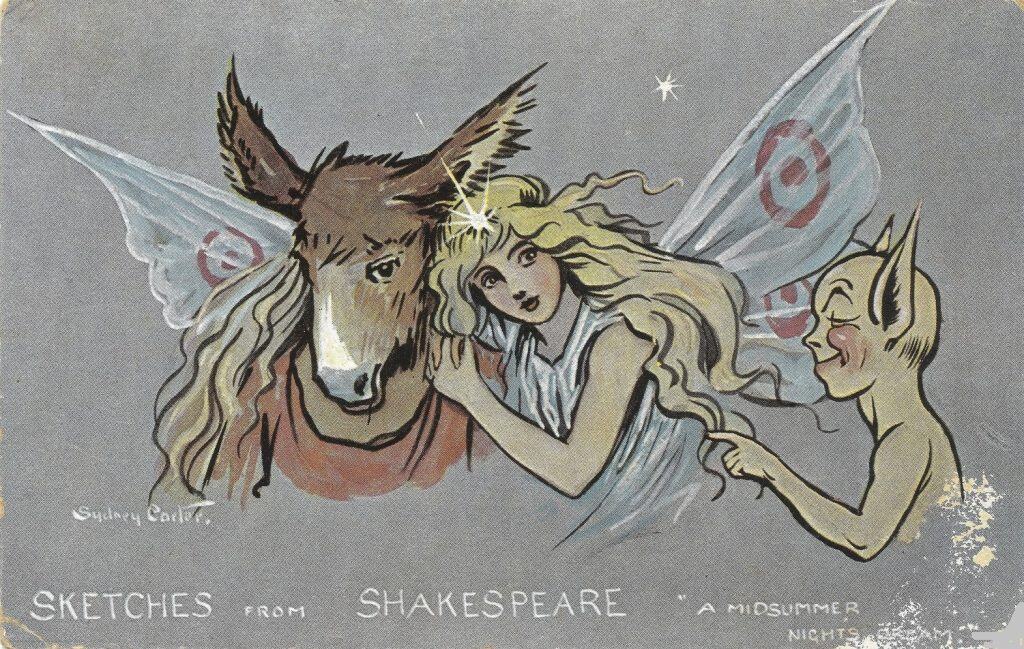
Shakespeare’s A Midsummer Night’s Dream is an enchanting comedy that appeared around 1596. The play is set in Athens and it whisks audiences away to a magical world of love, mischief, and mayhem. Athens comes alight when the young lovers Lysander and Hermia, as well as Demetrius and Helena, become entangled in a complicated web of relationships.
Meanwhile, in a nearby forest, the mischievous fairy king Oberon and his loyal servant Puck engage in a series of pranks and tricks on unsuspecting mortals, including the four young lovers.
As the night wears on, the boundaries between reality and fantasy blur, and the characters find themselves lost in a world of wonder and confusion. Shakespeare’s clever use of language and his skill in the exploration of themes makes A Midsummer Night’s Dream one of Shakespeare’s most loved works.
Twelfth Night
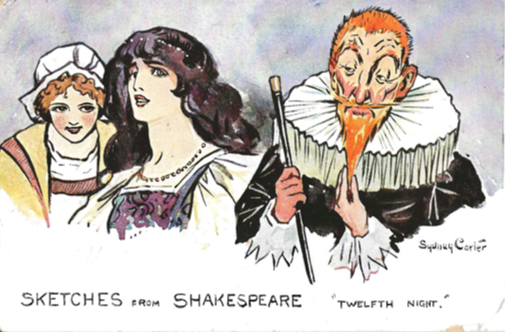
Shakespeare wrote Twelfth Night around 1601. It is a romantic comedy that explores the themes of love and illusion. The play is set in Illyria, where the protagonist Viola, a young woman, disguises herself as a man named Cesario to serve the lovesick Duke Orsino. Meanwhile, Viola’s twin brother Sebastian arrives in Illyria, and the two become embroiled in a complex web of mistaken identities, misunderstandings, and unrequited love.
The play is known for its witty dialogue and memorable characters, including the mischievous Sir Andrew Aguecheek and the enigmatic Countess Olivia. As the story unfolds, Viola’s disguise is eventually discovered, and the characters confront their true feelings and identities.
Twelfth Night ends with a sense of resolution and happiness.
A Winter’s Tale
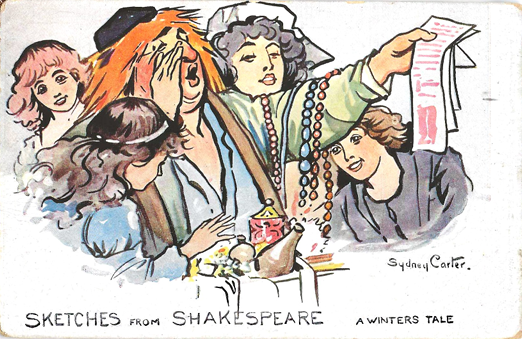
A Winter’s Tale was William Shakespeare’s newest romantic comedy in 1611. The story features King Leontes, the ruler of Sicilia, and his wife Hermione, who is expecting a child. However, Leontes becomes convinced that his wife is having an affair with his friend Polixenes, the King of Bohemia, and orders his servant Camillo to poison his rival.
The tale takes a dramatic turn as Leontes becomes increasingly obsessed with his perceived betrayal and orders the death of his newborn daughter, Perdita. Meanwhile, Hermione is imprisoned and eventually dies after giving birth, leaving Leontes consumed by grief and guilt.
Years later, the story takes another turn as Perdita, who was abandoned as an infant, falls in love with Florizel, Polixenes’s son. There is a reunion that reveals that Perdita is alive – a fact that overjoys Leontes and those from his court.
A Winter’s Tale is, in essence, a morality play. Throughout, the playwright explores themes of love and loyalty, as well as the consequences of jealousy and misery caused by mistaken deeds. The play’s ending is likely the most joyful and uplifting of Shakespeare’s works, causing it to be a perpetual audience favorite.
Excellent information about the artist and great synopsis of each play. Thank you!
I am among those who studied Macbeth in high school.
I second Delores’s and Bob comments. Good Job Edith! Thank you. Paul